In the past few years, LiDAR (Light Detection And Ranging) capabilities have evolved significantly, thanks to the rapid advancements in sensing technologies. This laser-based sensing approach has become a popular, sought-after solution due to its improved accuracy and data processing capabilities. The LiDAR market has witnessed enormous growth recently. In 2023, it was valued at USD 1.4 billion.
Although LiDAR is popular in robotics, its integration with sophisticated technologies like Artificial Intelligence (AI) and Machine Learning (ML) algorithms has helped unlock major opportunities for innovation. The applications of LiDAR are across various industries.
Let’s check out the lesser-known uses of LiDAR beyond robotics.
Infrastructural Monitoring and Construction
LiDAR has efficient data collection and processing capabilities that help in 3D modeling, mapping, and surveying for smoother construction workflows. It can create accurate digital twins to enable virtual reality walkthroughs for better planning, risk assessment, and decision-making. It can identify design flaws even before construction. Thus, it saves significant time, effort, and resources, eliminating the need for project reworks.
Infrastructural safety is a major concern, as deteriorating structures can cause significant damage. LiDAR sensors are used in Structural Health Monitoring (SHM) inspection techniques to identify existing limitations using a precise and dense 3D dataset. They also offer a comprehensive picture of construction sites to determine their safety and identify potential hazards. As a result, defects are detected early, and adequate measures can be implemented.
Military and Defense Applications
LiDAR devices can efficiently detect smaller objects due to high spatial resolution. Besides, they are highly accurate systems that can offer details about the target, such as its 3D coordinates, laser orientation, velocity, material composition, and more. They can also detect objects through any masking items, be it clouds, trees, or even underwater.
LiDAR can form precise images of different terrain features, offering three-dimensional views. Its AI-powered capabilities help with the autonomous navigation of military drones. The sensor also simplifies missile performance evaluation by gathering accurate speed data. Therefore, LiDAR systems are widely used for improved situational awareness in military and defense applications.
Agriculture
LiDAR helps with efficient agricultural practices like precision farming, smart crop management, accurate soil analysis, and more. It can create digital elevation models and generate accurate topographic 3D maps with its automated remote sensing methods. It offers a birds-eye view of the entire farmland, helping with the exact location of natural resources, slope variations, elevations, and other landscape features. Thus, it becomes easier to evaluate soil conditions and identify waterlogging, soil erosion, and other location-based investigations for better emergency response.
LiDAR sensor devices can be attached to Unmanned Aerial Vehicles (UAVs) or drones for improved pest control measures. They can be used for sowing, uniform fertilizer applications, cultivation, optimal agricultural planning, and decision support. LiDAR, therefore, helps automate traditional agricultural practices with intelligent technologies, promoting the new-age smart farming- Agriculture 5.0.
Environmental Applications
LiDAR is widely used for environmental management, preservation, and sustainability practices. Its 3D mapping capabilities can create accurate models with unprecedented details and precision that help predict environmental changes like unexpected terrain differences, flood risks, unstable landscapes, and other potential hazards. LiDAR data can be combined with river hydraulics modeling to understand floodplain dynamics, water flow changes, and waterlogging and plan appropriate mitigation measures.
The energy industry also relies upon LiDAR systems for remote data collection, assessing different sites, and identifying potential renewable sources. LiDAR can efficiently gather information regarding wind speed and direction, solar radiation, wave patterns, and more. Thus, it assists in renewable energy projects by helping select suitable locations, optimizing the placement of solar panels or wind turbines, and making informed decisions.
Smartphones
Recently, LiDAR has redefined smartphone technology as it is now used in mobiles. LiDAR mobile applications offer endless possibilities. It has helped introduce computational photography with faster autofocus features in cameras. With LiDAR, it is also possible to measure the dimensions of real-life objects, enabling advanced Augmented Reality (AR) experiences. Its accurate depth-sensing capabilities help with better object detection. LiDARs can also scan detailed 3D models. LiDAR helps with modeling objects and even real-life locations, creating virtual spaces for more immersive experiences.
LiDAR: The Future of Remote Sensing
Undoubtedly, LiDAR has vast potential and is highly versatile. It brings great precision and efficiency into different operations and finds extensive applications across diverse areas. There are still limitless scopes for LiDAR uses. It will continue to push the boundaries of innovation and create more effective cutting-edge solutions in the future. There is still so much more to learn about LiDAR technology, and the world has yet to experience its full potential.
At Hokuyo, we offer leading smart sensing solutions tailored for different applications. Our range of LiDAR sensors comes equipped with highly advanced features for optimal performance both indoors and outdoors.
Get in touch with us to learn more about our range of LiDAR sensors.

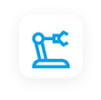 Factory Automation
Factory Automation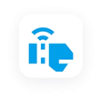 Logistics Automation
Logistics Automation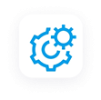 Process Automation
Process Automation Crane Collision Avoidance
Crane Collision Avoidance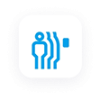 LiDAR/Obstacle Detection
LiDAR/Obstacle Detection Safety Laser Scanners
Safety Laser Scanners Optical Data Transmission
Optical Data Transmission Hot Metal Detectors
Hot Metal Detectors Laser Distance Sensor
Laser Distance Sensor Blog
Blog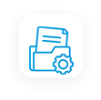 Whitepapers
Whitepapers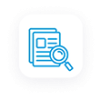 Case Studies
Case Studies Infographics
Infographics